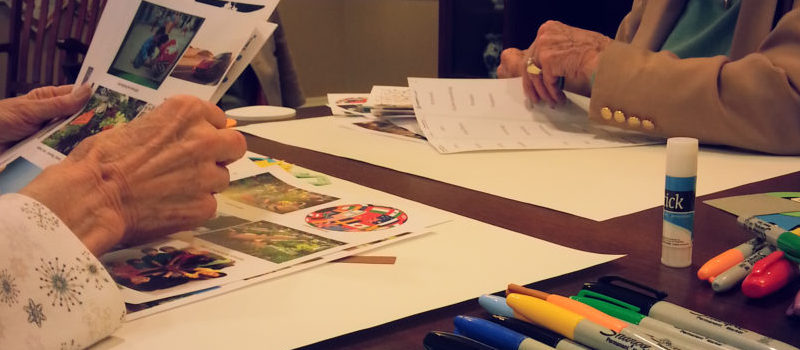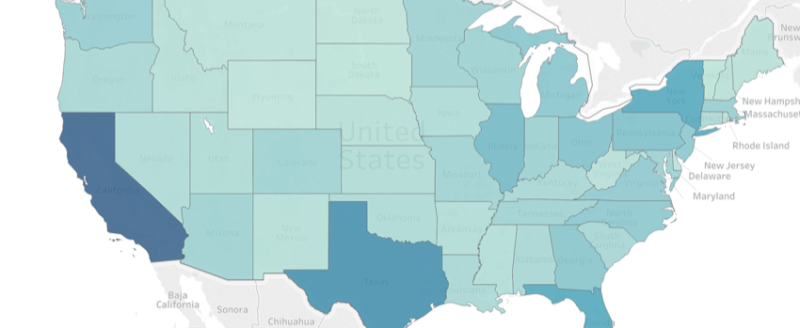TEAM
Darwin / Jacinda W / Doug P / Josh M
RESPONSIBILITIES
• Design research method
• Co-facilitate in co-design workshop sessions
• Analysis & Synthesis Data
This is a collaborative project, under the guidance of Dr. Elizabeth B. -N. Sanders, where interdisciplinary teams (consisted of students from the disciplines of design, system engineering, art education, gerontology, public health, and business) worked with the elderly (the co-designers) to explore and design issues of future aging and social engagement.
Our team was interested in inter-generational and social issues and we were working with four participants. We started by giving each participants a different theme for them work with on a “dream board”. Those themes were: access to community, developing meaningful relationships, inter-generational value, and environment for creative outlet.
PROCESS
At the start of this project, the student team was introduced to the residents that were willing to help. Four (4) First Community Village co-designers was interested in the topic related to intergenerational social engagement and they volunteered to be a part of our team. There were seven (7) co-design sessions throughout the semester, where the participants were actively involved in generating ideas, eventually shaping the different concepts into one final design development.
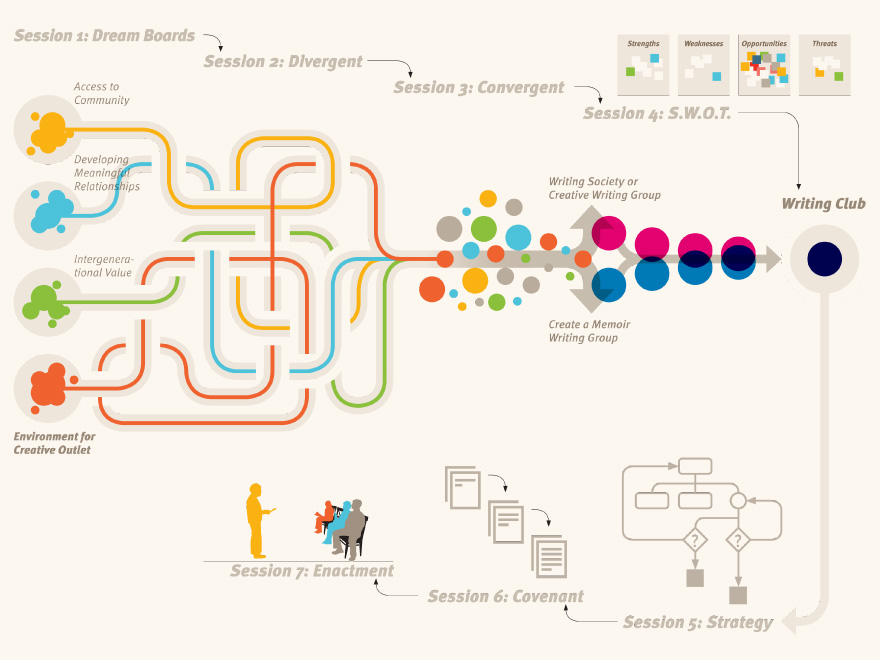
Session 1: The Dream Board
Prior to the session, the co-designers were asked to do a workbook journal, in which they would reflect on their day-in-a-life experiences for three days. A few prompts were included to help with the co-designers’ thought process, such as “I wish I had…,” “What is the frustrating thing you dealt with today?” and “What makes your day better?” Then, the student team took the completed journal workbooks and from the reflections the co-designers had written, five topics related to the theme of intergenerational social engagement were derived: Fostering Meaningful Relationships, Environment for Creative Outlet, Good Samaritans, Intergenerational Value, and Access to What? (open-ended).
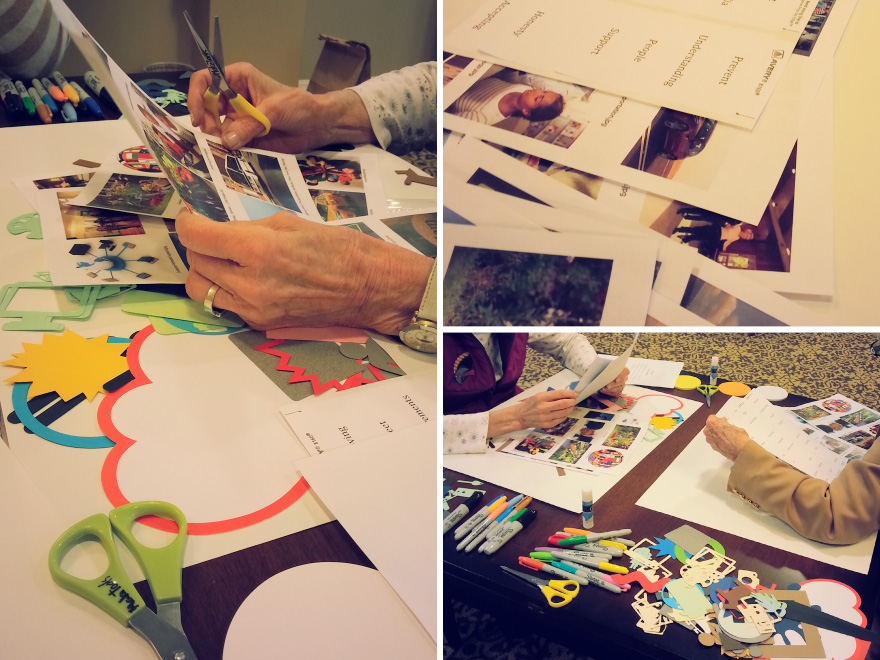
In the first session, the co-designers were introduced to the five topics created from their journal workbooks. Each of the co-designers was asked to choose one category and, with a corresponding collage material kit, create a dream board of what the “ideal experience” for that topic would be. Since, there was only four elderly participants, they picked four topics of the five (Good Samaritans was not picked). After creating their dream boards, the co-designers presented to the group the ideal experiences they had created.
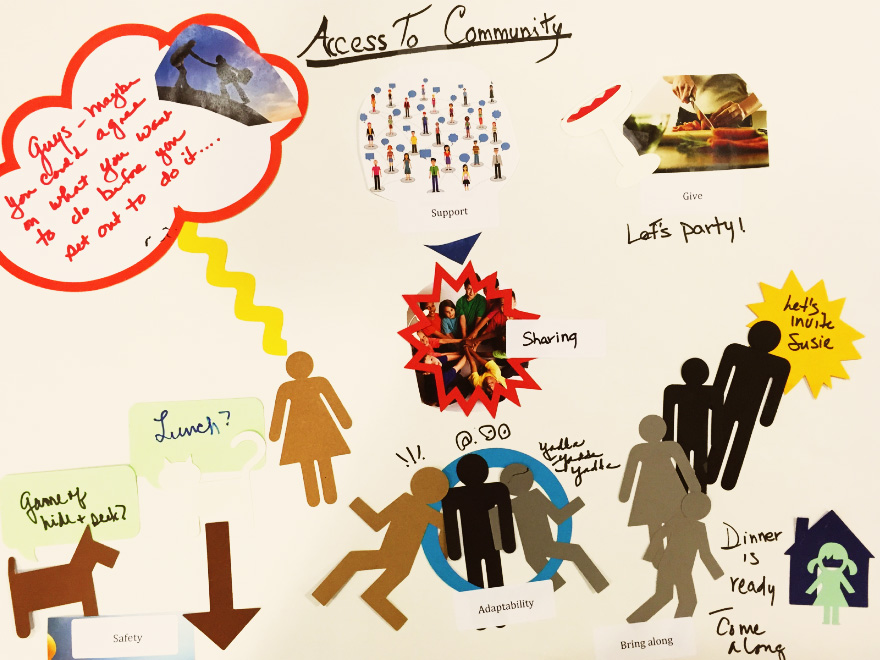
Session 2: Divergent – Review & Brainstorm
Before the second session, the dream boards that the co-designers had created and the stories that they told, were analyzed and broken into key points. These key points were then presented to the co-designers at the beginning of the second session. Then, the participants brainstormed various ideas that fall under the category that the co-designers had created a dream board for. From here, the five topics were narrowed to one theme: Environment for Creative Outlet. From there, more specific ideas were generated related to the Environment for Creative Outlet theme. A few examples include “gardening competition,” “senior center,” “mystery traveling group,” “pie-baking party,” and so on.
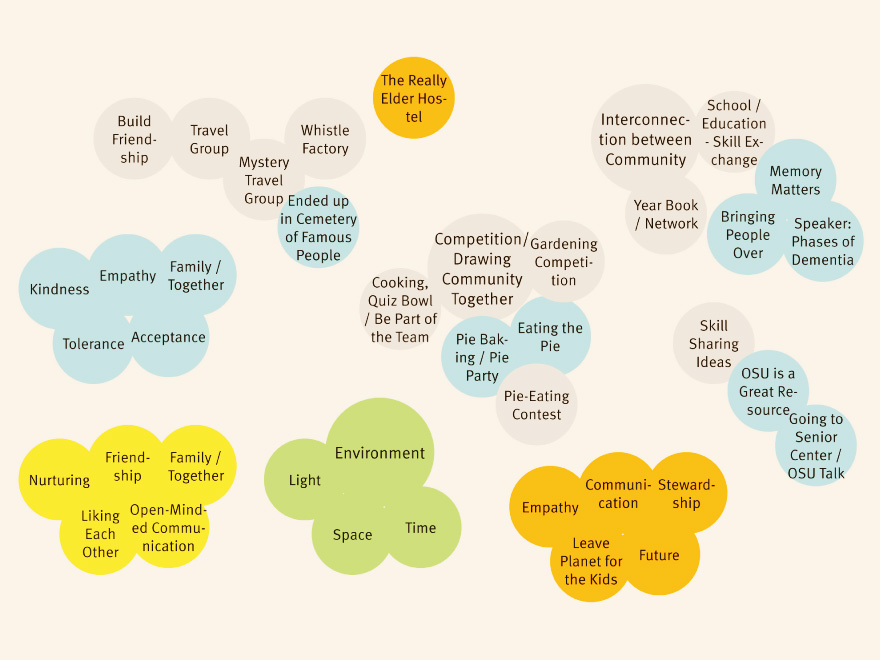
Session 3: Convergent – Aiming for One Idea
The session began with the goal of expanding the specific ideas generated from the previous session, and then narrowing down all of the ideas to one final concept. In order to do this, an activity was developed to help the co-designers “aim” in, or narrow the topic focus, by voting for their two favorite topics in a progressive series of rounds. Ultimately, the co-designers were able to narrow the topic focus to two very similar and overlapping ideas: creating a memoir writing group, or a writing society/creative writing group.
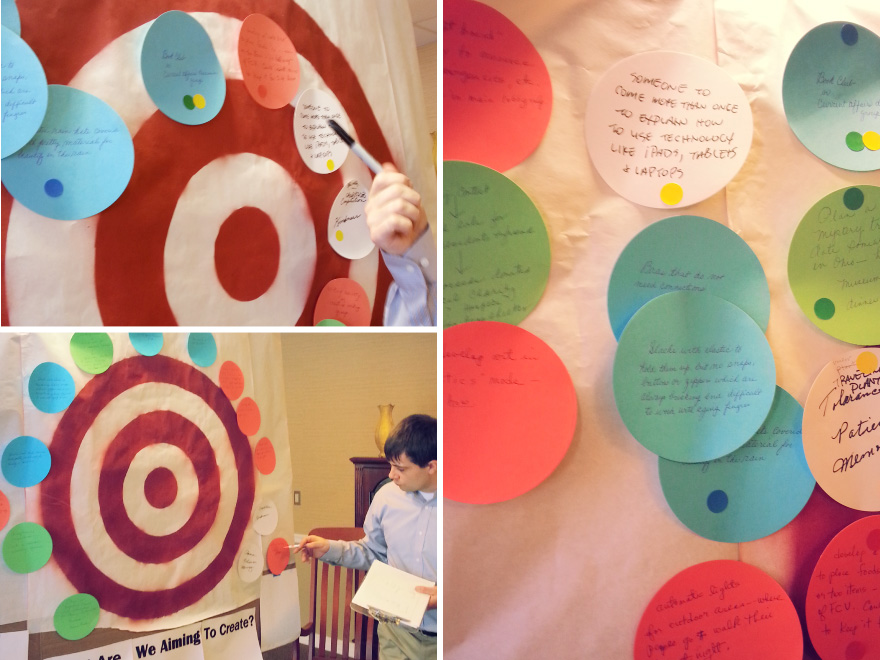
Session 4: SWOT Analysis
In session 4, the student team introduced to the co-designers a few examples of how writing groups could be organized and developed, so that the co-designers were primed for the main activity in this session. To help the co-designers focus on what the writing group or society could be, a S.W.O.T. (Strengths, Weaknesses, Opportunities, Threats) analysis exercise was utilized to explore the possible structures and outcomes of the writing group. During the session, a lot of opportunities were generated by the team and one that resonated most to the co-designers was the idea of creating a covenant for members of the writing group to abide by.
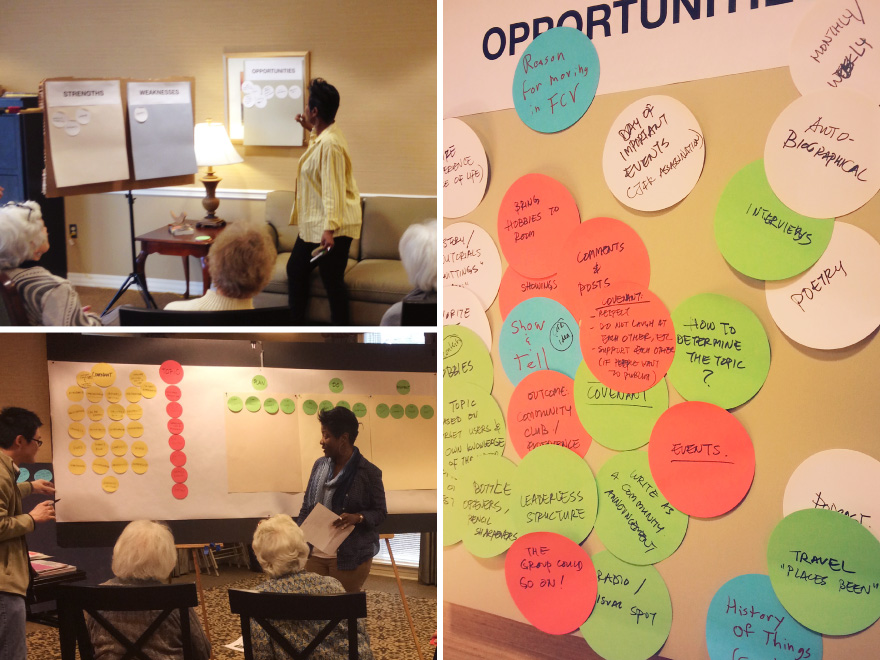
Session 5: Developing the Covenant
In the fifth session, rough content for the covenant, which was first generated by the student team, was placed on a board. Through a process of elimination and revision, the rough covenant was refined to a number of guidelines that was agreed upon by the co-designers. In this session, the structure of the writing group was also discussed. However, the co-designers were very resistant to actual scheduling or any tangible output. Rather, they were more concerned with the actualization and continuation of the writing group and the essence of what it would be.
Session 6: How the Writing Group Works
Based on the ideas generated during the fifth session, the student team proposed an actionable concept to present to the co-designers what the writing group could look like. This actionable concept consisted of four sections: “Idea”, “Covenant”, “How It Works” and “Topics”. The “Idea”, “Covenant” and “Topics” had already been developed previously leading up to session six. However, “How It Works” was still ambiguous. The focus of the team’s exercise during this session then, was primarily to work on “How It Works.” After the “Covenant” was further refined, the co-designers were then able to collectively design a more solid structure of the writing group, i.e., “How It Works.” At the end of the session, the actionable concept of the writing group was developed and ready to be tested.
DESIGN PRINCIPLES
As we worked with our co-designers through many iterative sessions, the co-designers came up with the desire to create a writing club. The way the writing club was designed as an incomplete system based on the underlying principles of:
1. Anybody can write, and
2. the club is a self-organized group without hierarchical system.
Based on those principles, a kind of covenant was drafted.
Session 7: The Enactment
The focus of the seventh session was to pilot test the writing group. In this case, the form of the pilot test was to enact and embody the first meeting of the writing group. In preparation for the test, the student team gave the co-designers a packet that included a sample notification from the facilitator, the meeting topic, an invite, and the assignment: to write their “funniest moment at First Community Village.” The co-designers were also asked to bring a friend, or potential member, to the writing club in order to provide an unbiased, outsider’s feedback.
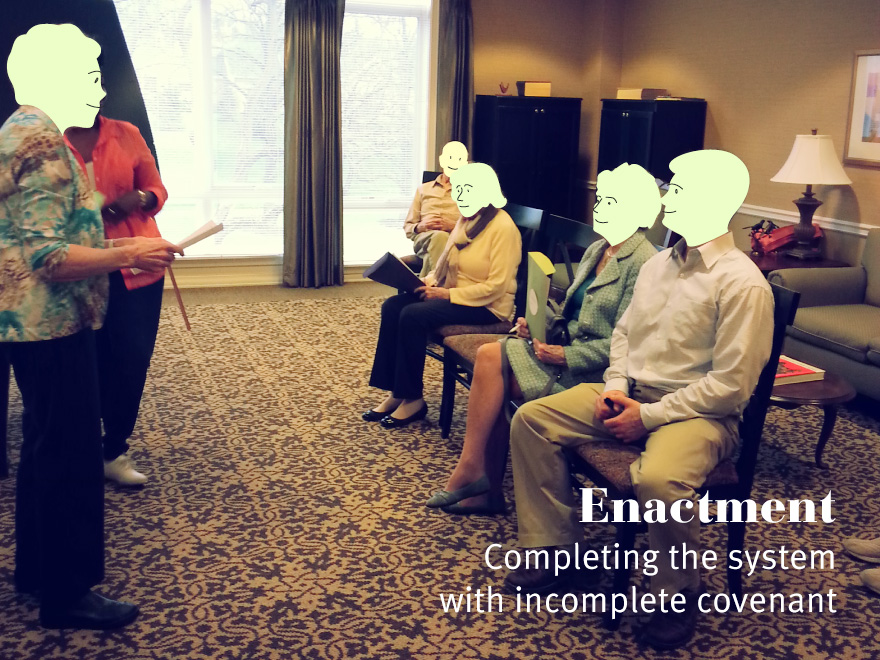
RESULTS
The final session was an enactment of the co-designers to embody what the club could function as. The enactment process served 2 functions. One the one hand, the participants would be able to actually experience what the club would be be like and we could give comments and feedback throughout the process. On the other hand, the enactment itself completed an incomplete system, i.e. the covenant, through improvisation, fast thinking, interactions and negotiations between the members of the group.
REFLECTIONS
1. It seems that generally there are declining status in most of the older adults population, namely, as society become modernized, a lot of older people lose political and social power, influence, and leadership. But that does not have to be the case. The older adults we were working with were not only incredibly creative, but along with their age comes with a lot of wisdom and life experiences. It is something that society should harness. A community of older adult living has so much potential, so much to teach, it would be a disservice to the society for not actively support and encourage older adults’ involvements in civic services.

